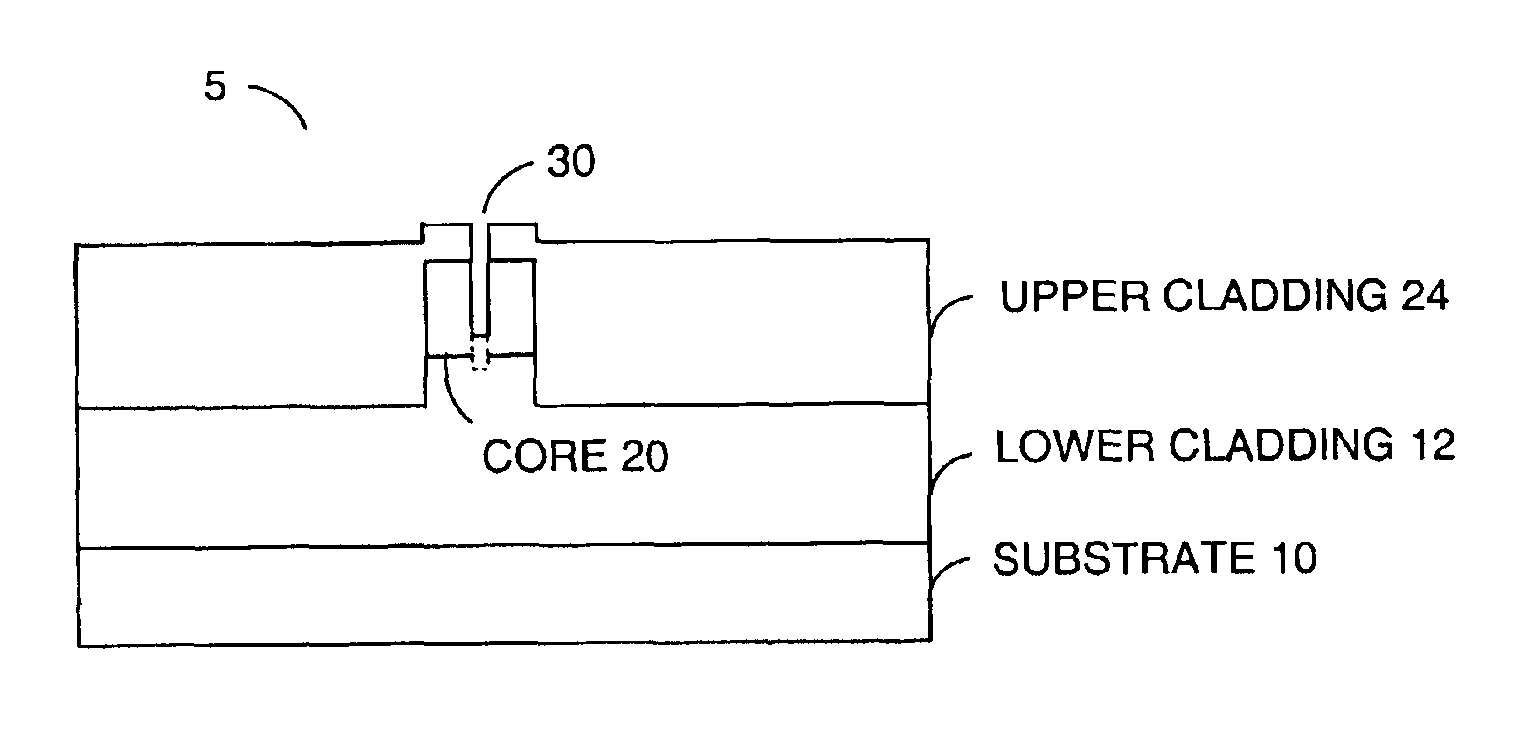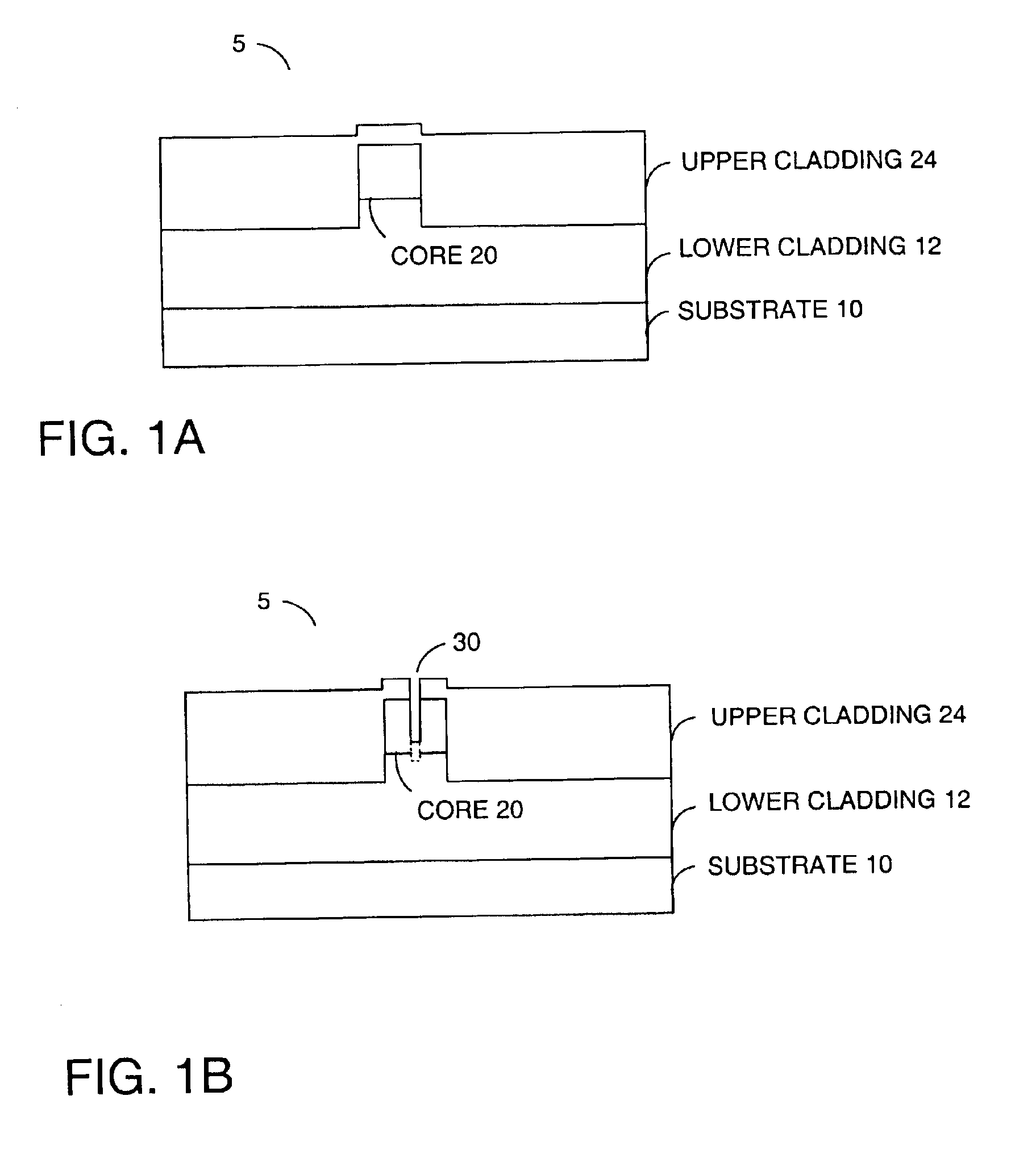Thermal compensation of waveguides by dual material core having positive thermo-optic coefficient inner core
a waveguide and thermo-optic coefficient technology, applied in the field of optical circuits, can solve the problems of large power consumption, less than ideal configuration, and large size of the device formed by optical fibers
- Summary
- Abstract
- Description
- Claims
- Application Information
AI Technical Summary
Benefits of technology
Problems solved by technology
Method used
Image
Examples
Embodiment Construction
[0018]A planar lightwave circuit comprises one or more waveguides that are thermally-compensating. The thermally-compensating waveguides comprise a cladding and a core that comprises two regions running lengthwise through the core. One region has a negative thermo-optic coefficient (“TOC”); the other region has a positive TOC.
[0019]FIG. 1A is a schematic diagram showing one embodiment of a cross-sectional view of a waveguide structure 5. In one embodiment, the structure is subsequently modified as described with respect to FIGS. 1B and 1C to be thermally-compensating.
[0020]As shown in FIG. 1A, a layer of lower cladding 12 is typically deposited onto a substrate 10. A waveguide core layer 20 is deposited over the lower cladding 12, and an upper cladding 24 is deposited over the waveguide core layer 20. In one example, the substrate 10 is silicon, the lower cladding 12 is SiO2, the core layer 20 is SiO2 doped with Germanium, and the upper cladding 24 is a borophosphosilicate glass (BP...
PUM
| Property | Measurement | Unit |
|---|---|---|
| bend radius | aaaaa | aaaaa |
| width | aaaaa | aaaaa |
| length | aaaaa | aaaaa |
Abstract
Description
Claims
Application Information
 Login to View More
Login to View More - R&D
- Intellectual Property
- Life Sciences
- Materials
- Tech Scout
- Unparalleled Data Quality
- Higher Quality Content
- 60% Fewer Hallucinations
Browse by: Latest US Patents, China's latest patents, Technical Efficacy Thesaurus, Application Domain, Technology Topic, Popular Technical Reports.
© 2025 PatSnap. All rights reserved.Legal|Privacy policy|Modern Slavery Act Transparency Statement|Sitemap|About US| Contact US: help@patsnap.com



